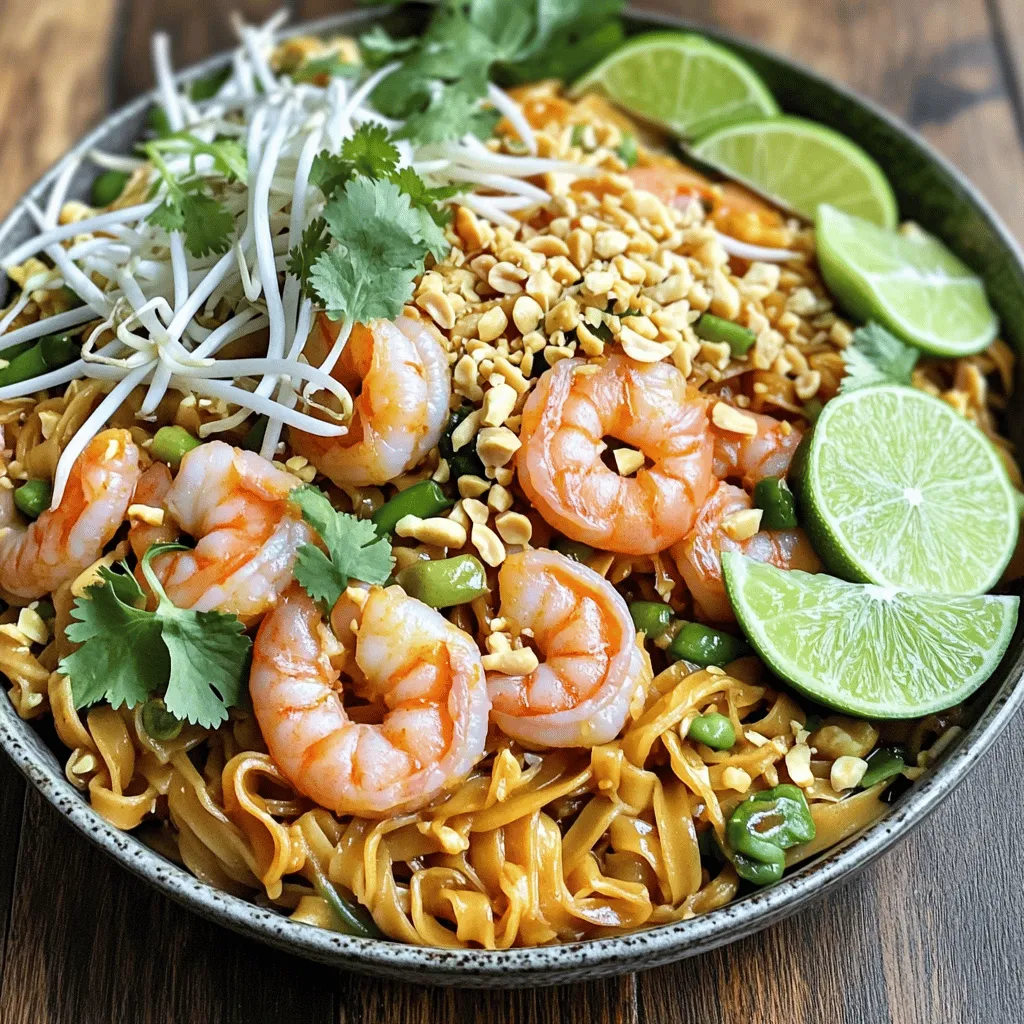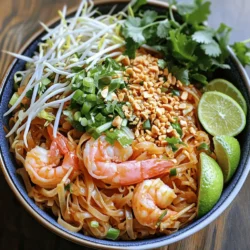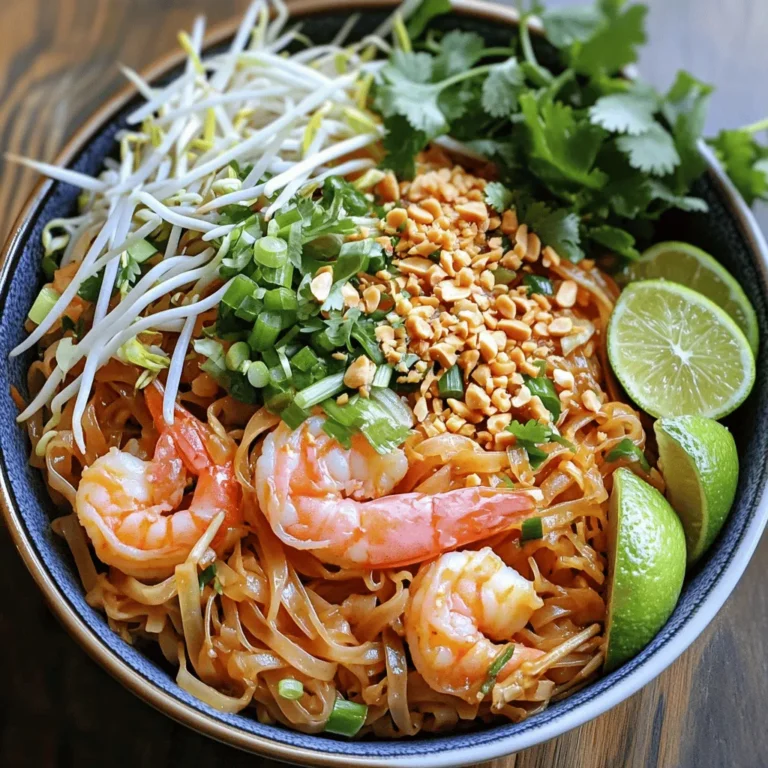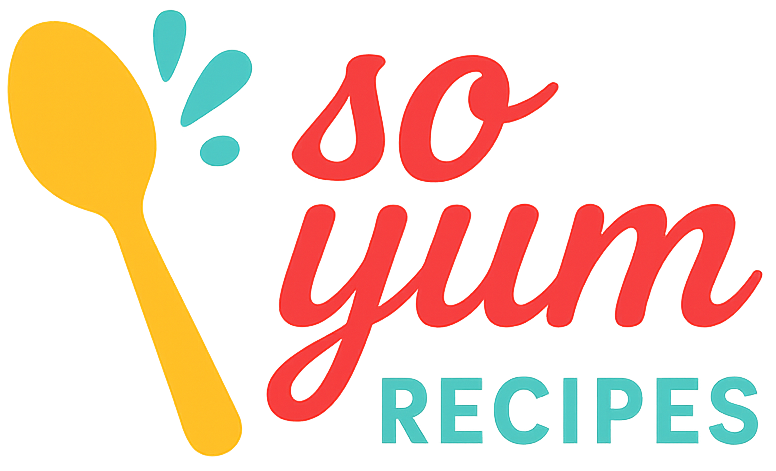Craving a quick and tasty meal? My Easy Pad Thai with Shrimp is just what you need! This dish packs a punch with fresh flavors and simple steps. Whether you’re a kitchen pro or a beginner, you’ll love how easy it is to whip up. With just a few ingredients and some cooking tips, you’ll impress your family or friends in no time. Let’s dive into this delicious recipe!
Ingredients
For an easy Pad Thai with shrimp, you need a few key ingredients. Each adds a unique flavor to the dish. Here’s what you will need:
– 200g rice noodles
– 200g shrimp, peeled and deveined
– 2 tablespoons tamarind paste
– 3 tablespoons soy sauce
– 1 tablespoon fish sauce
– 1 tablespoon sugar
– 2 tablespoons vegetable oil
– 2 cloves garlic, minced
– 1 egg
– 1 cup bean sprouts
– 2 green onions, sliced
– 1 tablespoon crushed peanuts
– Fresh cilantro for garnish
– Lime wedges for serving
These ingredients come together to create a tasty meal. You can also add optional ingredients for extra flavor:
– Red pepper flakes for heat
– Bell peppers for crunch
– Broccoli for a healthy twist
Feel free to mix in what you enjoy!”
Step-by-Step Instructions
Cooking the Rice Noodles
To make great Pad Thai, cook the rice noodles until al dente. This means they should be firm but not hard. If you cook them too long, they will get mushy. After cooking, drain the noodles and rinse them under cold water. This stops the cooking process and keeps them from sticking together.
Preparing the Pad Thai Sauce
Next, mix the tamarind paste, soy sauce, and fish sauce in a small bowl. Add sugar to balance the flavors. Taste the sauce and adjust as needed. If it is too sour, add more sugar. If it is too sweet, add more tamarind or soy sauce. This balance is key to a great Pad Thai.
Sautéing the Shrimp and Egg
Heat vegetable oil in a large skillet over medium heat. Add minced garlic and sauté for about 30 seconds until fragrant. Then, add the shrimp and cook for about 2-3 minutes. They should turn pink and opaque. Remove the shrimp and set them aside. In the same skillet, crack the egg. Scramble it until just set, then mix it with the shrimp.
Combining Everything
Now it is time to combine all the ingredients. Add the cooked noodles to the skillet along with the Pad Thai sauce. Toss everything together to ensure the noodles are well coated. This will help each bite be full of flavor.
Serving the Dish
For a beautiful presentation, serve Pad Thai in a large bowl. Garnish with crushed peanuts and fresh cilantro. Arrange lime wedges on the side for squeezing over. This adds a fresh touch and makes the dish pop.
Tips & Tricks
Cooking Tips
– When to add each component for best results: Start with the garlic. Cook it for a short time until it smells great. Then, add the shrimp. Cook it just until it turns pink. This keeps the shrimp juicy. After that, add the egg. Scramble it quickly, then mix it with the shrimp. Finally, add the noodles and sauce. This order makes sure every part cooks just right.
– How to avoid sticky noodles: To keep your noodles from sticking, rinse them well after cooking. Use cold water to stop the cooking process. This helps keep them separate. When you mix them with the sauce, do it gently. This way, they stay nice and loose.
Ingredient Swaps
– Alternatives for shrimp: If you don’t like shrimp, try chicken or tofu. Both cook well and soak up the flavors. You can also use cooked pork or beef. Just make sure to adjust the cooking time.
– Vegan options for the dish: For a vegan Pad Thai, skip the shrimp and use firm tofu. Also, replace fish sauce with soy sauce or a vegan fish sauce. This keeps the flavor bold and delicious without animal products.

Variations
Protein Variations
You can easily switch up the protein in this recipe. For a lighter option, use chicken. Simply cut it into thin strips and cook it the same way as the shrimp. Chicken cooks quickly, so keep an eye on it. It should reach a safe internal temperature of 165°F.
If you prefer a plant-based meal, try tofu. Firm tofu works best. Press it to remove excess water, then cut it into cubes. Sauté it until golden brown before adding it to the dish. Tofu absorbs flavors well, making it a great substitute.
Flavor Variations
Adjusting the flavors in your Pad Thai is simple and fun. If you like heat, add more chili flakes or a touch of sriracha. Start with a small amount and taste as you go. You can also add lime juice for extra tang.
For a sweeter sauce, increase the sugar. Just be careful not to overpower the other flavors. If you want a saltier taste, add more soy sauce. Taste your sauce as you mix it, making sure it suits your liking.
You can also experiment with fresh herbs. Basil or mint can add a fresh twist. Each choice brings a unique flavor to your dish, so feel free to get creative!
Storage Info
How to Store Leftovers
To keep your Pad Thai fresh, store it in an airtight container. Make sure it cools down first. You can keep it in the fridge for up to three days. If you want to store it longer, freeze it for up to two months. Just remember to separate the shrimp and noodles if you can. This helps keep the texture nice.
Reheating Tips
When reheating Pad Thai, avoid the microwave if possible. It can make the noodles soggy. Instead, use a skillet. Heat a bit of oil over medium heat. Add the leftovers and stir gently. If it seems dry, splash in a little water or sauce. Cook until everything is warm. This keeps the dish tasty and the shrimp tender.
FAQs
Can I make Pad Thai ahead of time?
Yes, you can make Pad Thai ahead of time. To prep in advance, cook the rice noodles and shrimp separately. Store them in airtight containers. Keep the sauce in a jar in the fridge. When ready to eat, simply reheat everything in a skillet. This method keeps the flavors fresh and the texture right.
What can I use instead of tamarind paste?
If you don’t have tamarind paste, try using lime juice and brown sugar. This mix gives you the sweet-and-sour flavor of tamarind. Another option is to use lemon juice with sugar. Both will change the taste slightly but will still be tasty.
Is Pad Thai gluten-free?
Pad Thai can be gluten-free! Use rice noodles, which are naturally gluten-free. For the sauce, choose gluten-free soy sauce. Many brands offer this option. Always check the labels to be sure. This way, you can enjoy a gluten-free version without missing out on flavor.” It has all the details you need to create this delicious dish. Enjoy cooking!
Now you know how to make Easy Pad Thai with Shrimp. We explored key ingredients, cooking steps, and helpful tips. You can swap proteins, adjust flavors, and create your perfect dish. Remember to store leftovers properly and reheat wisely to keep the taste vibrant. For full details, check out the Shrimp-tastic Pad Thai recipe. Enjoy your cooking adventure and impress your friends with this tasty meal!


